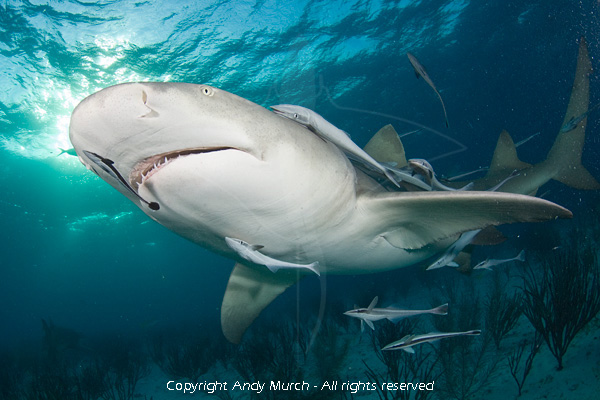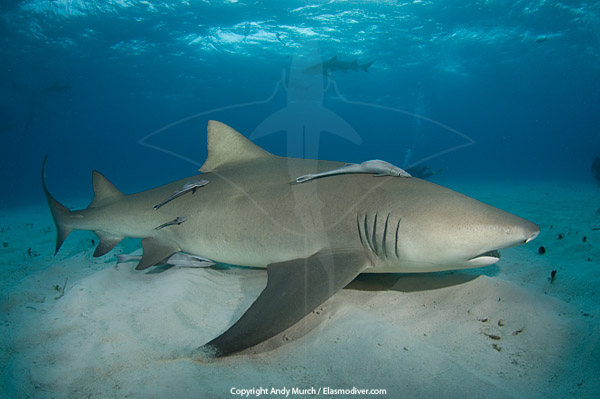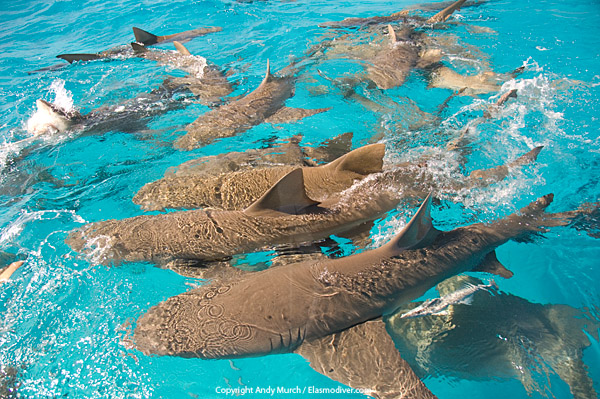|
|
|
SHARK INFO |
|
SHARK |
|
SHARK EVOLUTION |
|
|
|
SHARK DIVING |
|
SHARK DIVING 101 |
|
|
|
CONSERVATION |
|
|
|
PHOTOGRAPHY |
|
SHARK PHOTO TIPS |
|
|
|
RESOURCES |
|
|
|
WEB STUFF |
|
WHAT IS ELASMODIVER? Not just a huge collection of Shark Pictures: Elasmodiver.com contains images of sharks, skates, rays, and a few chimaera's from around the world. Elasmodiver began as a simple web based shark field guide to help divers find the best places to encounter the different species of sharks and rays that live in shallow water but it has slowly evolved into a much larger project containing information on all aspects of shark diving and shark photography. There are now more than 10,000 shark pictures and sections on shark evolution, biology, and conservation. There is a large library of reviewed shark books, a constantly updated shark taxonomy page, a monster list of shark links, and deeper in the site there are numerous articles and stories about shark encounters. Elasmodiver is now so difficult to check for updates, that new information and pictures are listed on an Elasmodiver Updates Page that can be accessed here:
|
|
_ |
LEMON SHARK |
||
|
|
Lemon shark photographs copyright Andy Murch. All rights reserved View all available Lemon Shark Pictures in the Shark Picture Database Common Names: Lemon shark, Atlantic Lemon Shark.
Latin
Name: Negaprion brevirostris
Family:
Carcharhinidae Identification: Stocky yelowish brown body. Fins falcate. Second dorsal fin almost as high as first. Eyes large. Snout broadly rounded. Size: Maximum length 340cm. Size at birth 56-81cm. Habitat: A coastal species. Inshore lagoons, and reef faces near deep water drop offs. Juveniles stay in areas of mangrove and shallow sand flats. Abundance and distribution: In the western Atlantic from New Jersey to southern Brazil and in the eastern Atlantic around west Africa, although the taxonomy of West African lemon sharks is uncertain. In the eastern Pacific from Baja to Ecuador. Behavior: Maintains a home range of 18-93 square kilometres. May be found solitary or in aggregations such as the one recently recorded off of eastern Florida. Adult diet consists mainly of fishes including jacks, catfishes, guitarfishes, stingrays, and other sharks. Reproduction: Viviparous. Recorded litter size 4 - 17. Gestation period 10 - 12 months.
Conservation Status: Lemon Sharks are caught commercially on longlines and the meat is dried, salted, or smoked. The fins fetch a very high price. The Lemon Shark is consumed in the United States and in Central and South America (Rose 1996). The rough and heavy skin has made the lemon shark preferable among tanneries for the production of leather. However, it is not included in TRAFFIC Network's list of species frequently appearing in available information on worldwide shark fisheries (Rose 1996). It is a target species in Belize, Mexico and USA and reported as bycatch in St Lucia (Oliver 1996, Anon. 1997). Lemon Sharks were seen at a fish market in Cameroon in 1991, but not since then (C. Grist pers. comm.). The species is also caught in recreational fishing and was reported as the 13th most common shark species in the US recreational fishery (Casey and Hoey 1985). A decrease in the number of juvenile Lemon Sharks between 1986-1989 in the lower Florida Keys may have been caused by several years of shark fishing tournaments and 20 years of targeting with gillnets affecting the return of females to bear new litters (Manire and Gruber 1990). The Lemon Shark is a popular aquarium species and it is also used extensively for research purposes. Lemon Sharks used to be common in the western Atlantic, from New Jersey, USA to Brazil, but lately their numbers have been depleted, especially around Florida (S.H. Gruber pers. comm.). Photographs: Tiger Beach dive site, Little Bahama Bank, Bahamas. Similar species:
Diving logistics: Lemon sharks are extremely easy to photograph at Tiger Beach in the Bahamas. Liveaboard dive boats leave from Riviera Beach in Florida and usually conduct one week trips to the Northern Bahamas. Most of the week is spent at a variety of dive sites collectively known as Tiger Beach. This area is also the best place to encounter Tiger Sharks, and it is a good spot to see Caribbean reef sharks, Great Hammerheads, nurse sharks, and occasionally bull sharks. There is a seasonal aggregations of large mature female lemon sharks near Jupiter, Florida. There is also a couple of shark feeds run by local operators leaving from Jupiter. Citations:
https://dx.doi.org/10.2305/IUCN.UK.2015.RLTS.T39380A81769233.en.
|
|
























